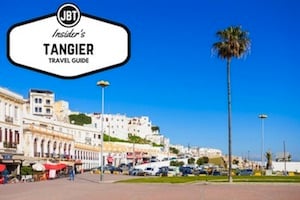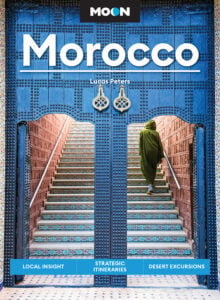
Bordered by 3,500 kilometers of coastline and crossed by various mountain ranges, Morocco is characterized by an incredible diversity of people and landscapes. Tucked caddy-cornered between the Atlantic Ocean and the Mediterranean Sea in North Africa, Morocco is cut by the various fingers of the Atlas Mountains and lone range of Rif Mountains in the north. These characteristics give Morocco an aerial fingerprint unlike any other in Africa.
Morocco is quickly becoming one of the world’s most sought-after tourist destinations. From Casablanca through Rabat and to Tangier at the tip of the continent; from the infinite blue labyrinth streets of Chefchaouen, and down to Fez, and still further south to the ever-spreading dunes of Erg Chebbi in the Sahara Desert; over to Marrakesh, and the laid-back coastal town of Essaouira, Morocco has an abundance of important natural and historical assets, not to mention a rich and diverse cultural heritage.
Morocco’s Attraction To Travelers
Society in Morocco is still steeped in its Muslim identity, but is tolerant of various types of people, cultures, and religions. It’s Berber and Jewish past help to keep the minds of the people open and Morocco is the only country in the Muslim world with a Jewish Heritage Museum (which you can read about in our Casablanca travel guide).
Hospitality in Morocco is legendary and the young generation are more open minded than ever; shifting a traditional mindset in favor of a more open, western point of view while still holding dear to family, art, craftsmanship, and religion.
We cannot discuss Morocco without mentioning a handful of regions that make this country such an attractive destination. Following are some of the highlights that stick in travelers’ minds when visiting (some farther off the tourist trail than others). You can reference our Morocco map to locate these various places.
Merzouga: Merzouga is a small Saharan town located in south-eastern Morocco, 35 kilometers from Rissani and 50 kilometers from Erfoud. Merzouga is famous for its dunes in the Erg Chebbi region – the highest in Morocco. It is a man destination for tourists who wish to ride camels into the dunes and sleep in a Bedouin-style tent for the night.

Ziz Valley: The source of the water that feeds into the Ziz Valley lies in the Eastern High Atlas. Although intermittent along its bed, the rivers were used to facilitate commerce through this mountainous region. What most travelers do is admire the view from some upper angles available from the road; what more should do is venture into this lush oasis to learn about the people and their way of sustainable agriculture that has been supporting life in the region for a millennium!
Todra Gorge: Fifteen kilometers from the center of Tineghir, the area is home to a rising number of visitors and bus tourists that can make the location not as appealing as it once was.
Dades Valley: This seeming labyrinth is located in the upper valley of Dades, an oasis that begins with a river valley from the Middle Atlas Mountains and continues to the edge of Ouarzazate.
Ait Ben Haddou: This location dubbed a World Heritage Sight by UNESCO, in the province of Ouarzazate, has been used as a backdrop for several famous films and is a worthwhile stop for photo enthusiasts. Farther along is the remains of Telouet – a place that compares to Ait Ben Haddou in both beauty and history, but not a common stop on the tourist trail.
Erg Chigaga: It’s the rustic and removed Sahara Desert of Erg Chigaga that not too many tourists venture towards due to it being slightly more off the beaten path than Erg Chebbi. The region offers stunning beauty, wildlife, traditional nomads, and sometimes extreme weather patterns that make it more of a seasonal destination during some parts of the year.
Main Tourist Destinations
The major tourist attractions in Morocco are topped by Marrakesh, according to a report by the ministry of Tourism. Following, the most visited cities include Agadir, Casablanca, Tanger, Fez, and Rabat, followed by Ouarzazate, Meknés, and even lesser-visited places such as Tetouan. To expand upon some more of these popular places:
Marrakesh
Known as the capital of Morocco under the reign of Youssef Ben Tachfine, this “Pearl of the South” known as Marrakesh, remains one of the top attractions of tourists. This is also where, as if stepping back two centuries, you can find coppersmiths hammering metal in the copper souk, or other diligent workers in Souj Laghzal dedicated to wool, or again, in El Btana dedicated to the skins of sheep, or again, in Souk Zarbia where caftans and carpets are being sold to the highest bidder. Highlights in Marrakesh include: Jemaa el-Fnaa, Medrassa Ben Youssef, Saadian Tombs, Majorelle Gardens, and Koutoubia Mosque.
Fez
Located on the trade routes connecting the Atlantic Ocean and the Mediterranean Sea, Fez in the north of Morocco is a crucial center of commerce and industry (textile mills, refineries, tanneries and soap), thus making crafts and textiles an important part of the city’s past and present economy. The city, whose old quarters are classified world heritage by UNESCO, is a religious and intellectual center as well as an architectural gem. One can admire the beautiful Qarawiyin Mosque (built in the 9th century), the ramparts and the Imperial Palace. Other places not to miss include: Medersa (Madrasa) Bou Inania, Saadian Tombs, Bab Bou Jeloud, Moulay Idriss II Mausoleum, Fondouk Nejjarine, as well as the King’s Palace and the Jewish quarter known as the Mellah.

Chefchaouen
With a background of mountain peaks of the Rif, the Blue City of Chefchaouen in the north-west extends its white medina hillside, while in the south, as to complete the picture, the river Oued Laou brings what it takes to make the banks look green and fresh. Founded in the 15th century to resist the Spanish and Portuguese invasions, Chefchaouen today is a small town that is proud to offer its visitors the beauty of sweetness of life, especially with its blue oceanic walls, for which it is called “The Blue City”.
Tangier
Set by the seaside, the beautiful bay of Tangier is the last vestige before the Strait of Gibraltar and Europe. This port city is a colorful place that has its eyes on the future behind the white walls of the Medina. Tangier, inhabited by more than one million people, lives in this ambivalence. The intellectuals of yesterday would hardly find the atmosphere they had come to seek; the walls still breathe Matisse and Bowles.
Essaouira
The name Essaouira comes from Al Souirah (small walled fortress). This city, situated between Safi to the north, and Agadir to the south, was once known as Mogador. Although its walls protected against pirates of all sorts, Essaouira has its feet in the sea and hands on the beach. The most prestigious monuments of Essaouira include the Porte de la Marine, built in 1769, or La Skala du Port, a battery whose guns were manufactured in Spain. Today, these arches and open-air museums seem not to contradict modernity. Today, a sense of youth and freshness mingle well with the city’s archaic sites.

Rabat
Rabat is the capital of Morocco and is a symbol of continuity in Morocco. At the heart of the city, stands the Hassan Tower, the last vestige of an unfinished mosque. Behind the marble columns, the Mohammed V Mausoleum engenders respect and reverence.
Casablanca
Known as the international metropolis whose development is inseparable from the port activity, Casablanca is a major international business hub. As a commercial and industrial city, “Casa” includes a spiritual dimension with its iconic floating Hassan II mosque, one of the largest and most beautiful in the world.
Types of Tourism in Morocco
Morocco offers a wide range of options for a variety of travelers, whether budget, middle-range, or luxury oriented. Morocco’s gentrification comes with higher prices as European quality competes with more locally owned accommodation options. Levels of accommodation generally range from US $20-100 per person per night at the budget level to $150-200 per person per night at the middle range, and well above $300 per person per night at the luxury level. The country also has a fantastic range of walking and especially trekking opportunities in places such as the Atlas Mountains, which are home to several 4,000-meter peaks. These offer a dramatic and beautiful landscape dotted with ancient Berber villages and impressive snowmelt that turns streams into gushing rivers every spring.
Mass Tourism in Morocco
Today, Morocco pays the cost of a decision made 10 years ago with their focus on mass tourism in an attempt to imitate countries like Tunisia. By many, this was seen as a major error since there are plenty of opportunities for quality tourism in Morocco. Mass tourism can affect a country in various ways, distorting views, limiting real cultural encounters, and wasting resources.
Unfortunately, Morocco has not yet come around yet to this lesson and mass tourism is still a major focus for the future of tourism in Morocco. It now seeks mass tourism at a high cost; projects around Agadir (as an example) seek to transform this Moroccan coast to something akin to “Costa Brava” with an accumulation of unappealing structures dotting the beachfront.
In Morocco, a major re-focus needs to occur where a more sustainable and rewarding type of tourism should be the major goal. Attractions should not be on casinos and slot machines, but on real cultural encounters that do not disturb (but empower) local communities.

Ups and Downs in Tourism to Morocco
Although Morocco remains more visited than other Arab countries, the world financial crisis of 2008 still has its effects and has lingered on in Europe (a main source of tourist numbers) while other events such as the swine flu, the volcanic eruption in Iceland, the cancellation of the Paris Dakkar rally, and the events in Marrakesh in 2011 over the years have hindered the rise of travelers visiting the Kingdom of Morocco.
As a result of political uprisings in neighboring nations, Morocco has seen a significant increase in total tourist numbers over the last three years. Initially, travelers thought that Morocco too might show signs of instability, but that never occurred. Over time, tourist numbers have risen as travelers discover how safe and stable Morocco continues to be.
Given the competitive nature of tourism in the Mediterranean region, Morocco is undergoing some aggressive promotional tactics that will hopefully pay off in the long run. However, several types of tourism in Morocco have not been well expanded upon, namely rural, cultural, and ecological tourism.
Planning Your Morocco Cultural Adventure
We at Journey Beyond Travel has over a decade of experience as one of Morocco’s top in-country travel companies. Feel free to contact our experts to get your plans off of the ground.
Co-Author
Special thanks to Ms. Samia Hamouira in Morocco for her research and co-authoring of this piece.
Resources
Statistics of tourists in Morocco – Report by Ministry of Tourism








